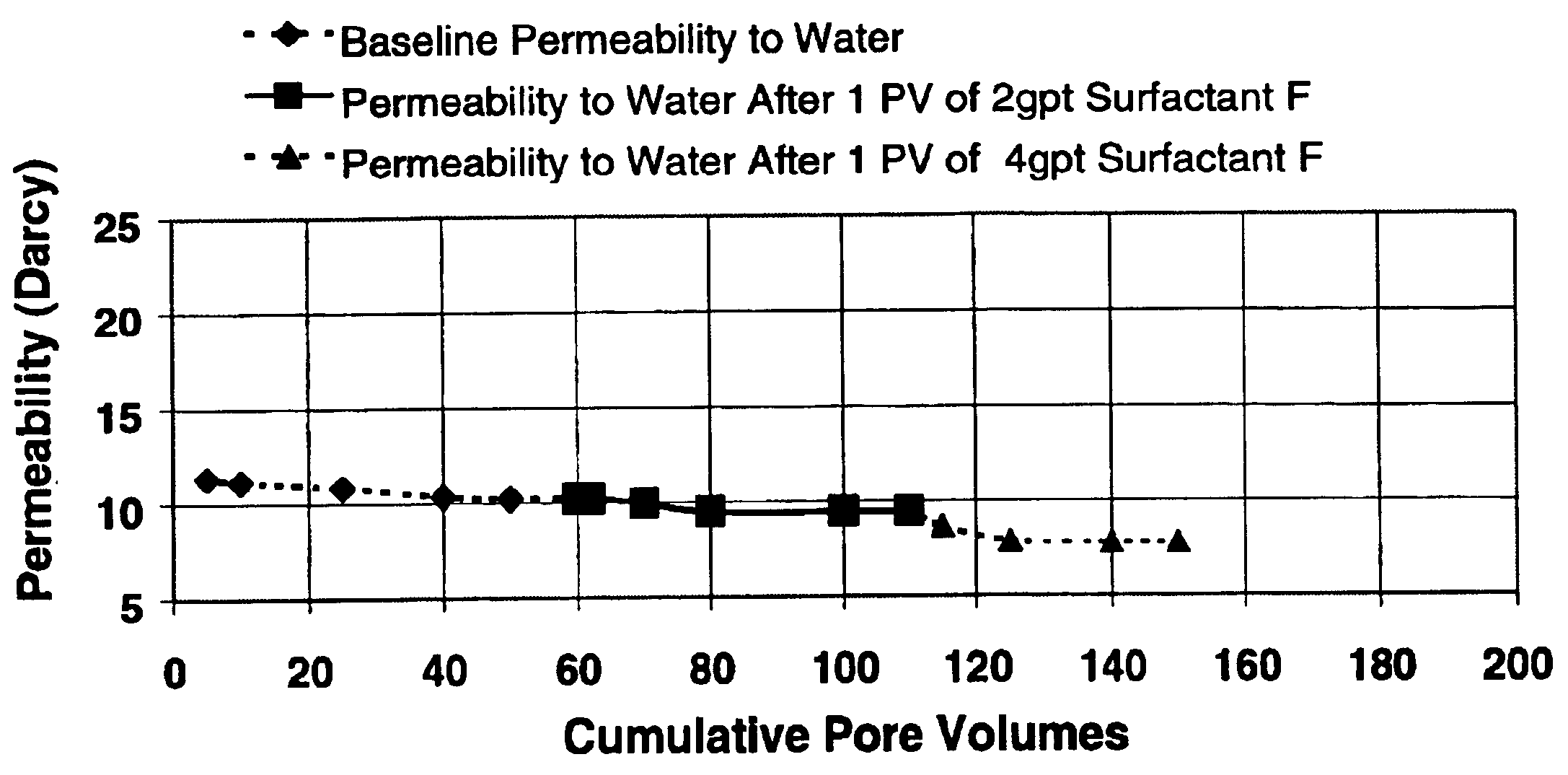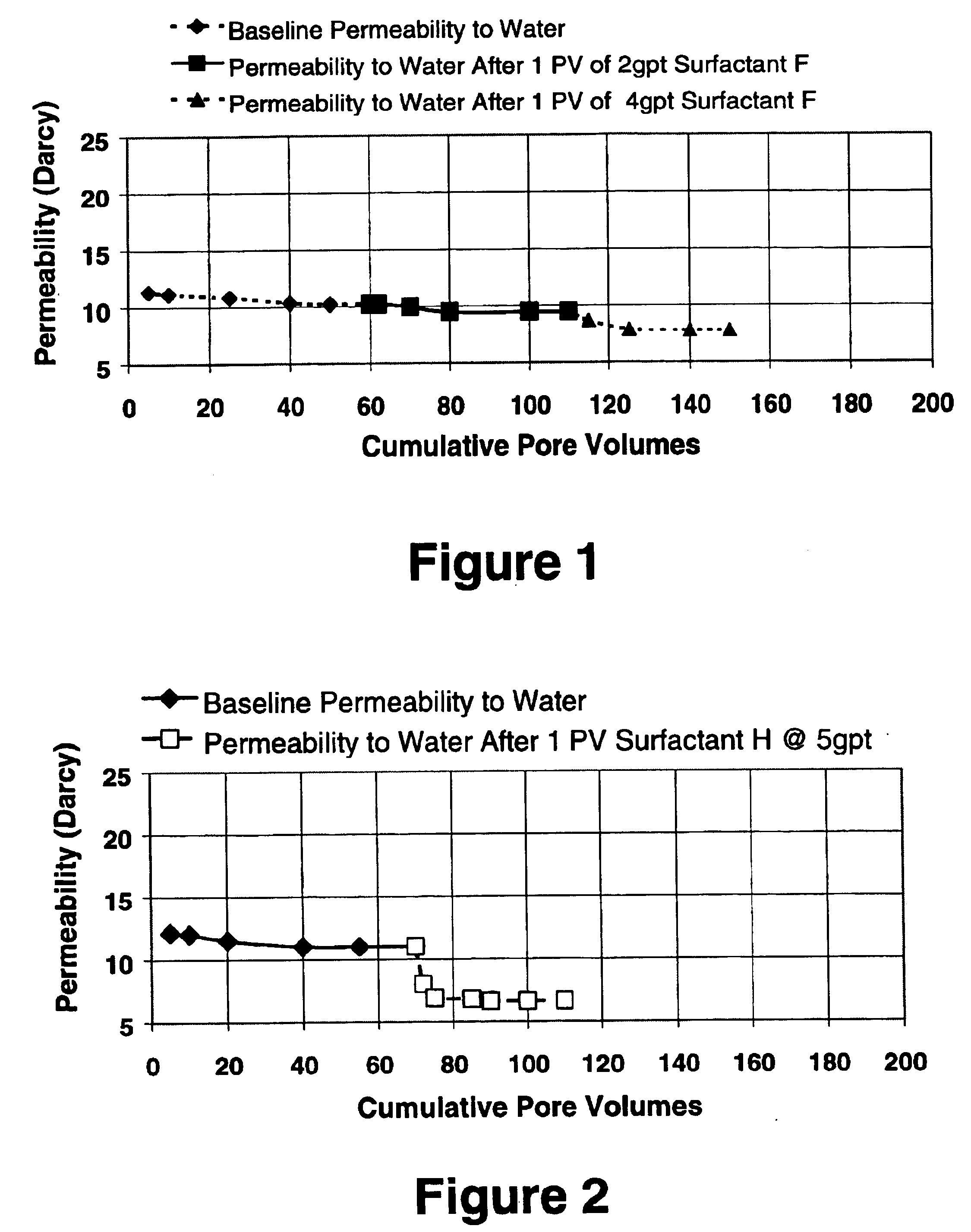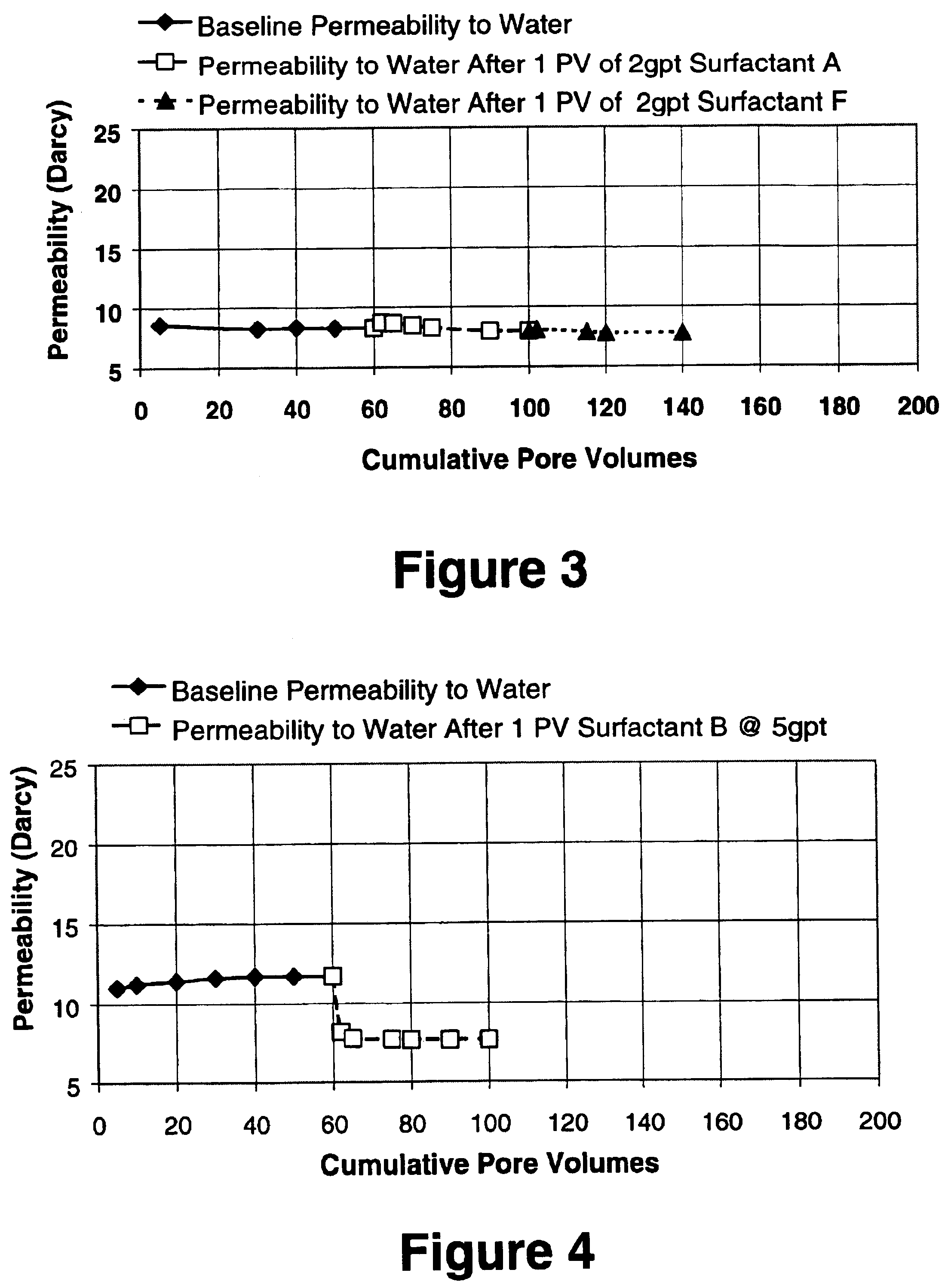Foaming agents for use in coal seam reservoirs
a technology of foaming agent and coal seam, which is applied in the direction of fluid removal, other chemical processes, borehole/well accessories, etc., can solve the problems of reducing the mobility of the surface of the coal seam, reducing the fracture conductivity, and often completely saturated with water, so as to improve the dewatering and production. , the effect of good oil wetting characteristics
- Summary
- Abstract
- Description
- Claims
- Application Information
AI Technical Summary
Benefits of technology
Problems solved by technology
Method used
Image
Examples
example 1
[0029]A wetting test was performed using a modification of the method described in API Bulletin RP 42. The procedure comprised:[0030]1. Fill glass jar with 50 mL of 2% KCl and add surfactant.[0031]2. Place 5 grams of crushed coal into the solution prepared in Step 1 and mix for 60 seconds.[0032]3. Decant the liquid from the slurry prepared in Step 2 into another glass jar.[0033]4. Add 50 mL of dyed kerosene to the jar containing the decanted liquid.[0034]5. Drop the coal solids into the jar prepared in step 4.[0035]6. Observe the color and dispersibility of the coal particles.
[0036]The coal was in the form of large chunks of weathered (water wet) material. The surfactants used are summarized in Table 1.
[0037]
TABLE 1SurfactantChemical descriptionAbranched tridecyl alcohol (7 moles EO and 2 moles BO)Banionic ethoxylated ammonium fatty alcohol ether sulfateCA cationic polymeric quaternary salt disclosed as a polyquat.Dcationic blend of quaternary amine & alkanolamineEanionic / cationic b...
experiment 1-1
[0049]Previous testing of surfactant A, both in the laboratory and in the field, has shown this additive to have superior de-watering properties for coalbed methane wells, which increases the production of natural gas from such wells. The current testing of surfactant A again shows that this additive should enhance de-watering of coals due to very strong oil-wetting properties. Visual observation of the results of this experiment clearly showed coal fines being captured in the diesel phase above the oil-water interface. Larger wetted pieces of oil-wet coal were held at the interface by the strong wetting properties. The water phase was exceptionally clear. This indicates that all of the coal was attracted to the oil phase or settled to the bottom due to density differences, demonstrating the strong oil-wetting tendencies of surfactant A. Finally, an evaluation performed on the coal at the bottom of the sample jar also indicated an oil-wet condition due to the strong clumping tendenc...
experiment 1-3
[0050]Surfactant C created a stable emulsion between the kerosene and water phases. The water phase did not clear up within the 45-minute time interval, due in part to the emulsion and in part to the presence of the coal fines. The heavy concentration of coal fines in the water phase indicated that the coal was water-wet. Prior to the shaking step, the flow of the large coal particles was tested by tilting the jar, and in this test the coal particles flowed freely without clinging to one another and moved at a relatively low angle (<45°). The free flowing nature of the particles in the water phase indicated water-wetting.
PUM
| Property | Measurement | Unit |
|---|---|---|
| Pressure | aaaaa | aaaaa |
| Amphoteric | aaaaa | aaaaa |
Abstract
Description
Claims
Application Information
 Login to View More
Login to View More - R&D
- Intellectual Property
- Life Sciences
- Materials
- Tech Scout
- Unparalleled Data Quality
- Higher Quality Content
- 60% Fewer Hallucinations
Browse by: Latest US Patents, China's latest patents, Technical Efficacy Thesaurus, Application Domain, Technology Topic, Popular Technical Reports.
© 2025 PatSnap. All rights reserved.Legal|Privacy policy|Modern Slavery Act Transparency Statement|Sitemap|About US| Contact US: help@patsnap.com



